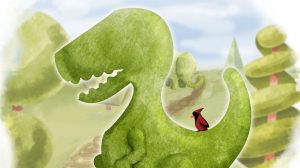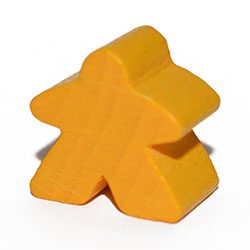
Few game components have the same cachet as the meeple. Constantly mimicked and reimagined, the meeple still stands tall as one of the most recognizable shapes in board gaming.
In a previous industry spotlight on Panda Game Manufacturing we talked with Brent Kinney, Panda’s Vice President of Business Development. In today’s article Brent tells us just how Panda manufactures everyone’s favorite board game component, the “meeple”, in a glorious array of shapes and colors.
Have you ever wondered how meeples are made? pic.twitter.com/crKXt896PI
— Panda Game Manufacturing (@pandagm) April 26, 2019
When a game publisher sends you an idea for a meeple shape, does your team offer input or guidance? For example, if a profile were too complex or might result in fragile sections?
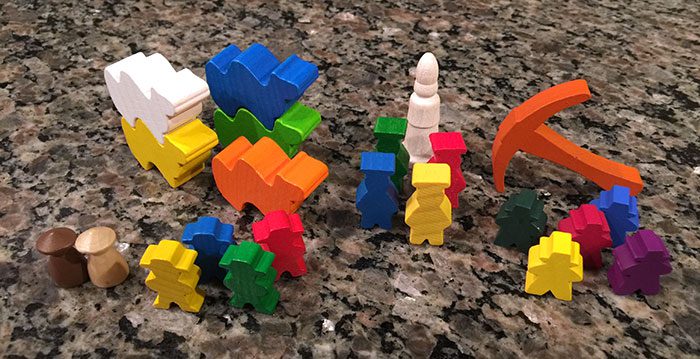
Our team definitely provides some guidance as far as meeple creation goes. We will usually send the publisher’s initial designs to our wood team for them to analyze and see if there are any major issues with that design right off the bat. If that looks good, then we will make up a sample to make sure everything works the way it should. The sample is shown to the client to see if they want to do any more fine-tuning of the shape and once everyone is happy with the outcome, we move into mass production of these pieces.
Do publishers have a say in what material is used for a shape? Meeples are generally wooden, but I’ve also seen plastic meeples, and what appears to be some sort of synthetic hybrid that feels like wood.
In general our publishing partners have the choice among plastic, wood, and resin for their meeples. Wood is kind of the classic standard for board game bits (ala Carcassonne) , so that is usually the avenue that most choose.
Plastic has become very hot lately with the influx of Kickstarter projects that have funded like crazy with miniatures, so we are seeing a lot more of that. There is a lot more that goes into making plastic pieces, so it is important that the publishers that are looking to do plastic to talk with us early and arrange their sculptors and/or 3D file designs well ahead of time.
Resin is another interesting option because of the texture that it creates that is very different from plastic or wood (it is almost a split between the two to the touch). We have also made metal coins in the past – so that is a material options as well. Although we haven’t made any metal meeples yet…
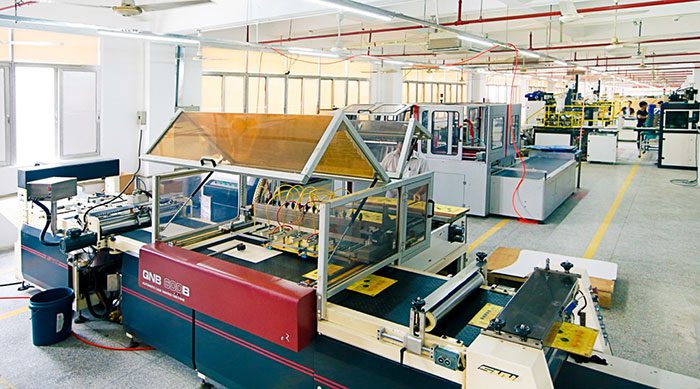
If a publisher chooses wood, do they get a choice in what type of wood, or is there an industry standard?
The main types of wood we use are maple, cherry, basswood, and New Zealand wood. The type of wood that is used for meeples is determined by our wood team. They are the experts so we lean on their experience and knowledge to choose the right type of wood for the game pieces.
Once a profile is finalized how do you present the finished piece to a publisher for approval? Are you using 3d printers, or do you output an actual piece with the final materials and finish?
We provide an actual sample to the client to approve the final design before we go to mass production on the pieces.
Because of the small quantity of pieces for the samples, those pieces are hand painted according to the pantone colors the publisher indicates. The pieces will be painted by automated process in the full production.
How are the shapes actually produced? Router? CNC machine? Barry White and some alone time? 😀
I’m more of a Reverend Al Green guy myself… 😀
These pieces are either machine cut or laser-cut based on their complexity of shape (more complex gets laser cut, but it is also more expensive). The difference in the laser cutting and machine cutting process is illustrated in the pictures below. The laser cut pieces are cut from a board of wood and for machine cut the wood is made into a strip and then cut like a loaf of bread.

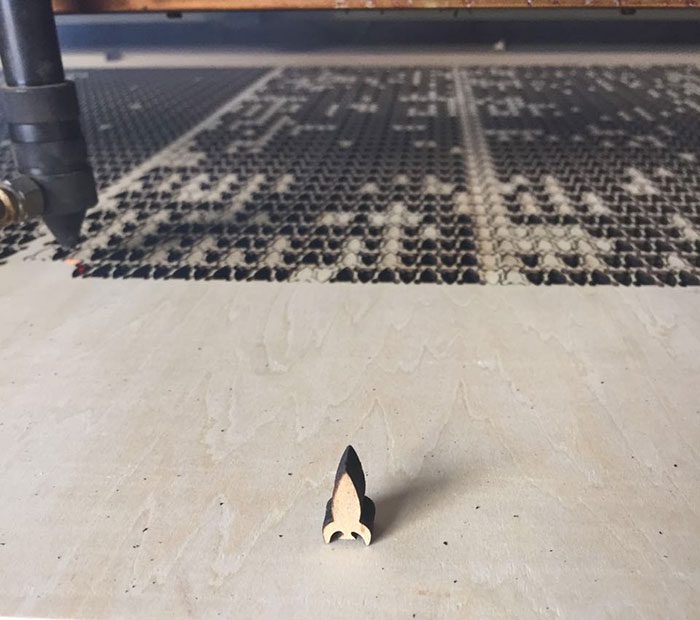
Meeples get dragged through all sorts of liquids: water, beer, soda, not to mention how often they get handled. What sort of finish do you use to stand up to so much abuse? Paint, stain, wax? How are they dried and stored?
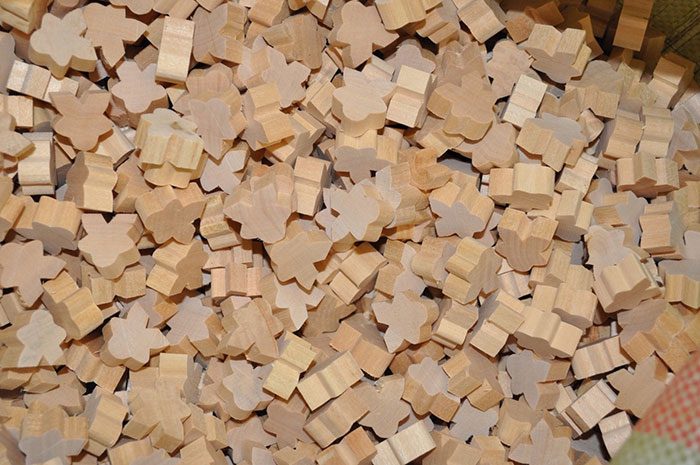
The first layer defense for the meeple is the paint itself. We make sure to paint the entire meeple evenly and cleanly. A good paint job alone will provide a lot of protection from wear and tear. After the painting is completed, then we apply a varnish to the pieces to seal up the paint job and provide even more protection from any board gaming mishaps that may occur.
We also have an acclimatization process where we check to make sure that the meeples are dried correctly and ensure that the humidity is low enough to package the wood. This is important because of the climate change between China and everywhere else the games would end up.
The finished pieces are so small, and there’s generally such a low quantity per box. What’s the process behind taking a bin of finished meeples and putting them into a game?
Our clients provide a spec sheet that shows which pieces go into the game and in what quantities. We give this information to our wood production team along with the total number of games that are produced and they produce the correct number of pieces for the games. The pieces are usually bagged into individual sets – so that 1 bag is 1 set, then our assembly team only needs to spot check the bags and then drop a single bag into each game.

It is a real team effort to get those little pieces into the games. Another part of our QC process is that we weigh each game on a highly precise scale. This scale can detect weight as little as a single meeple (or a little less) and is another check that the games are in the correct final form.
And that’s a wrap. Thanks so much Brent for telling us how you manufacture meeples. Be on the lookout for more industry articles as we dig into the board game production process.
What do you think about How Meeples are Made? Give us your opinions in the comments below!



